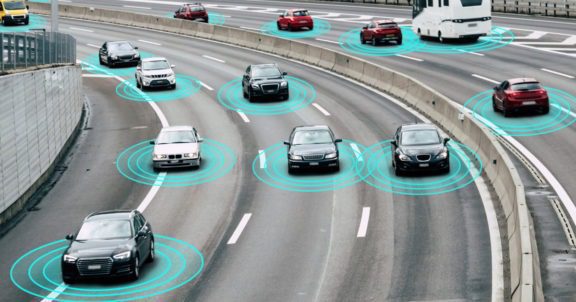
There’s a lot of industry buzz around Mobility, Autonomous Vehicles (AVs) and the fleet of the future. It may sound like science fiction, but AVs are closer than some may think. Manufacturers already offer varying levels of autonomy in many current models, and by 2020 it’s expected that fully autonomous vehicles will be available in certain models.
Benefits of Autonomous Vehicles
I recently attended the Silicon Valley Autonomous Vehicles summit where auto manufacturers, technology providers and other stakeholders gathered to share the latest technology, trends and implementation plans for the newest generation of AVs. Many conversations centered on reasons why AVs will be adopted, and the expected benefits they will provide. For example, federal, state and local governments embrace AVs as a solution to greatly increase safety, reduce traffic congestion and emissions, and provide access to mobility for the disabled and elderly. Manufacturers see AVs as a way to reinvent the auto industry and re-engage consumers and financial backers see opportunity in investing in new technologies, products and services.
Even though these stakeholders may have slightly different motives for driving the AV evolution, everyone agrees that safety is a key reason to adopt self-driving vehicles. Everyone will benefit from the expected decrease in accidents and traffic fatalities.
Autonomous Vehicles Will Save Lives
Consider these statistics. In 2016 there were 37,461 U.S. road deaths. According to industry experts 94% of crashes are attributable to human error. Drivers who are fatigued are twice as likely to make mistakes behind the wheel, and impaired drivers cause a third of road fatalities today.
Autonomous Vehicles will change the equation by removing humans from the drivers’ seat. A 2017 IIHS / HLDI study documents that today’s driver-assist technologies are already reducing accidents, saving lives and preventing injuries. Driver assists like forward collision warnings, blind spot monitoring and lane departure warnings are helping to reduce crashes. The most common accident — rear-end collisions — is on the decline due to automatic emergency braking.
The technology behind Advanced Driver Assistance Systems (ADAS) is rapidly evolving into fully autonomous vehicles. With the integration of more advanced sensors and software upgrades, vehicles will soon reach the level of autonomy where they operate without human input or oversight. Although AVs won’t completely eliminate accidents, they will dramatically improve safety by removing the risky human behaviors that put drivers in harm’s way. For example, a fully autonomous vehicle will not exceed the speed limit and will maintain safe following distances, reducing speed-related crashes.
What Do Autonomous Vehicles Mean For The Fleet Industry?
Full autonomous vehicles are still a few years away, and the technology is continuously evolving. That said, now is the time for clients to think about their strategy for incorporating AVs into to their fleets. At Wheels we work closely with manufacturers to understand the latest developments so we can make the right recommendations to support clients’ fleet goals. As the Spring ordering season approaches Wheels will work with clients to choose vehicles and safety features that will keep everyone safer on the road, no matter who is driving.